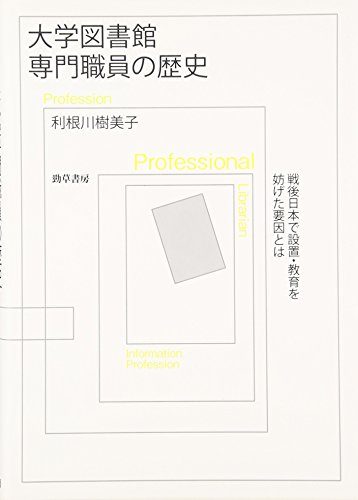- 著者
- Masako Miyashita Masahiro Kikuya Chizuru Yamanaka Mami Ishikuro Taku Obara Yuki Sato Hirohito Metoki Naoki Nakaya Fuji Nagami Hiroaki Tomita Hideyasu Kiyomoto Junichi Sugawara Atsushi Hozawa Nobuo Fuse Yoichi Suzuki Ichiro Tsuji Shigeo Kure Nobuo Yaegashi Masayuki Yamamoto Shinichi Kuriyama
- 出版者
- 東北ジャーナル刊行会
- 雑誌
- The Tohoku Journal of Experimental Medicine (ISSN:00408727)
- 巻号頁・発行日
- vol.237, no.4, pp.297-305, 2015 (Released:2015-12-02)
- 参考文献数
- 32
- 被引用文献数
- 1 22
After the Great East Japan Earthquake of 2011, there has been a concern about health problems among children. Therefore, we investigated the prevalence of wheeze and eczema symptoms and associated factors among children in areas primarily affected by the disaster. From 2012 to 2014, we distributed the parent-administered questionnaire to 25,198 children in all 233 public schools in the 13 municipalities of Miyagi Prefecture in northeast Japan. A total of 7,155 responses (mean age 10.5 ± 2.2 years) were received (response rate: 28.4%). The prevalence of allergic symptoms according to the International Study of Asthma and Allergies in Childhood (ISAAC) questionnaire in 2nd, 4th, 6th, and 8th graders was 12.4%, 9.9%, 9.3%, and 5.6% for wheeze, and 20.1%, 18.0%, 14.0%, and 12.4% for eczema. In multivariate logistic analysis, younger age, history of hospitalization, and difficulties in children’s daily lives as assessed by the Strengths and Difficulties Questionnaire (SDQ), were significantly and consistently associated with both allergic symptoms (both P < 0.05). Living in a coastal municipality was also associated with eczema symptoms (P = 0.0278). The prevalence of eczema symptoms in the 2nd (20.1%) and 8th (12.4%) grades was significantly higher than previously reported in Japan. Living in a coastal municipality was independently associated with eczema symptoms, and psychometric properties were also closely linked to allergic symptoms. These findings are clinically important for understanding the risks of allergic disorders after natural disasters.
3 0 0 0 OA 愛知県水産試験場業務報告書
- 著者
- 愛知県水産試験場 編
- 出版者
- 愛知県水産試験場
- 巻号頁・発行日
- vol.昭和16年度, 1944
3 0 0 0 OA [愛知県三河染織試験場]業務功程報告書
- 著者
- 愛知県三河染織試験場 編
- 出版者
- 愛知県三河染織試験場
- 巻号頁・発行日
- vol.昭和16年度, 1943
- 著者
- 松本 良夫
- 出版者
- 武蔵野大学現代社会学部紀要編集委員会
- 雑誌
- 武蔵野大学現代社会学部紀要 (ISSN:13490362)
- 巻号頁・発行日
- no.7, pp.23-36, 2006
- 著者
- 熊谷 公男 Kumagai Kimio
- 出版者
- 東北学院大学学術研究会
- 雑誌
- 東北学院大学論集. 歴史と文化 (ISSN:18808425)
- 巻号頁・発行日
- no.50, pp.1-20, 2013-03-25
3 0 0 0 OA 官報
- 著者
- 大蔵省印刷局 [編]
- 出版者
- 日本マイクロ写真
- 巻号頁・発行日
- vol.1928年04月09日, 1928-04-09
3 0 0 0 最中限の終盤の分析
- 著者
- 副田 俊介 田中 哲朗
- 出版者
- 一般社団法人情報処理学会
- 雑誌
- 情報処理学会研究報告ゲーム情報学(GI) (ISSN:09196072)
- 巻号頁・発行日
- vol.2003, no.79, pp.31-38, 2003-08-04
最中限は竹内郁雄によって提案された3人プレイヤのカードゲームである.本研究は最中限をプレイする強いプログラムを作ることを目的とする.最中限は提案されたばかりのゲームであるため,人間のプレイにおいても,有効な戦略は確立されていない.そこで,人間の知識を使わずに計算機を用いて最中限を分析することにより,有効な戦略を求めることを試みる.この目的のために,最中限をプレイするプログラムを自動対戦させる実験を行い,点数に注目して分析を行った.プログラムは途中まではランダムプレイ,最終ラウンドでは検索によって手を生成するものを用いた.このプログラムは最終ラウンドの検索では相手プレイヤがランダムプレイヤ,つまりどの手も等しい確率で選ぶプレイヤであると仮定して全幅検索を行っている.この実験の結果,最終ラウンドに入る時点で点数が最も高かったプレイヤのゲーム終了時の得点の期待値は -0.56,2番目のプレイヤは0.91,3番目のプレイヤは-0.54となり,最終ラウンドに入る時点で最も中間の位置にいるプレイヤが最も有利であるという経験則と,この条件の元では一致することが確かめられた.Saichugen is a three player card game introduced by Ikuo Takeuchi. As it is a fairly new game, no good playing strategies are well known yet for Saichugen. We have analyzed Saichugen endgames by using Saichugen playing programs. We have used programs that play randomly up to the middle of the game, and plays by searching in the last round of the game. The programs assumes that the opponents players play randomly when searching. We had this programs play each other for 1000 games and analyzed the results. For these playes. We were able to show that the player with the most middle points when entering the endgame tends to keep his place - win the game.
- 出版者
- 日経BP社
- 雑誌
- 日経ビジネス (ISSN:00290491)
- 巻号頁・発行日
- no.1785, pp.66-69, 2015-03-30
「そりゃそうでしょう。全国転勤ありの総合職として内定を出したわけだし、一人の人間を特別扱いできないことは分かるはず。苦労して手にした内定を蹴るはずないし、むしろ、介護に興味を持つなんて気骨のある子だと期待していたぐらいだったんです。
3 0 0 0 OA 大学キャンパスが周辺地域に及ぼす影響 : 東京を事例として
- 著者
- 梅岡 恒治
- 出版者
- 新領域創成科学研究科 環境学研究系 社会文化環境学専攻
- 巻号頁・発行日
- 2008-03-24
報告番号: ; 学位授与年月日: 2008-03-24; 学位の種別: 修士; 学位の種類: 修士(環境学) ; 学位記番号: 修創域第2679号 ; 研究科・専攻: 新領域創成科学研究科社会文化環境学専攻
- 著者
- 加藤 薫
- 出版者
- 日本精神分析学会
- 雑誌
- 精神分析研究 (ISSN:05824443)
- 巻号頁・発行日
- vol.47, no.1, pp.91-97, 2003-02-25
- 参考文献数
- 4
3 0 0 0 OA 赤色立体地図でみる月の地形
- 著者
- 千葉 達朗
- 出版者
- 一般社団法人 日本写真測量学会
- 雑誌
- 写真測量とリモートセンシング (ISSN:02855844)
- 巻号頁・発行日
- vol.54, no.1, pp.2-3, 2015 (Released:2016-03-01)
- 参考文献数
- 4
3 0 0 0 OA 新訳『正義論』を読む
- 著者
- 宮地 和樹 児島 博紀
- 出版者
- 東京大学大学院教育学研究科基礎教育学研究室
- 雑誌
- 研究室紀要 (ISSN:02857766)
- 巻号頁・発行日
- vol.37, pp.101-107, 2011-06
研究動向
- 著者
- 樋野 公宏
- 出版者
- 国土交通省
- 雑誌
- 国土交通省国土技術研究会論文集
- 巻号頁・発行日
- pp.87-92, 2013
3 0 0 0 OA 何故に電力国営を必要とするか?
3 0 0 0 OA 国字問題の解決 : 附・国語及国際語問題
3 0 0 0 IR 法律時評 自衛官事件から見える沖縄--保守化が意味するもの
- 著者
- 仲地 博
- 出版者
- 日本評論社
- 雑誌
- 法律時報 (ISSN:03873420)
- 巻号頁・発行日
- vol.73, no.6, pp.1-3, 2001-05
- 著者
- 早田 輝洋
- 出版者
- 日本音声学会
- 雑誌
- 音声研究 (ISSN:13428675)
- 巻号頁・発行日
- vol.1, no.2, pp.37-44, 1997
The Central Dialect of Heian Japanese exhibits three tonal melodies and one fall in pitch accent, if any. The fall mark accent should not be treated as part of a tonal melody. They are both specified in the underlying lexical items, but are mutually independent. It is argued that a downstep existed in this dialect from an autosegmental perspective. Some revisions are made in treating the tone of the imperfective participle ending <i>ru</i> and the <i>ku</i>-nominalization. The imperative <i>yo</i> and the vocative <i>yo</i> are shown to be tonally distinct and to be two different morphemes. The tone of the perfective <i>ari</i> and the copula <i>nari</i>, and the behavior of the third tonal melody are also dealt with.

